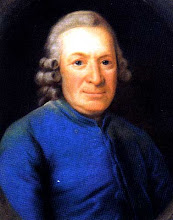GLOSSARY
In my opinion, the neurotransmitters dopamine (DA) and serotonin (5-HT) are the primary regulators of life. These two similar substances control in a reciprocal fashion not only human beings but also all other animal species. More than two millennia ago both the Chinese and the Greeks recognized that "
balance is health; imbalance is illness and pain." In summary, DA greatly resembles the Yang and 5-HT the Yin. Western medicine started to recognize this
antipodal action in
1957.
Multiple articles in the current medical literature discuss imbalance in the T helper cells. T helper cells are
simplistically divided into two major divisions, Th1 and Th2 cells. Harvard's Dr. Kimball summarizes this far better than I can. I would strongly recommend this
link. Let's focus on the two major components.
- The cellular immune system (Th1 driven, Th2 opposes) (increased by DA, suppressed by 5-HT) goes to work when it senses a foreign cell threatening our well-being. These foreign cells can arise from the outside, from viruses and bacteria whose survival inside our body is at the expense of our health or even our survival. This cellular system can also be activated to fight our own cells that have mutated and threaten us with cancer and similar diseases.
- The humoral system (Th2 driven, Th1 opposes) (increased by 5-HT, suppressed by DA) becomes activated when it senses that there are foreign proteins threatening to overwhelm us. The humoral system produce antibodies that can safely engulf these foreign chemicals and dispose of them safely.
Interestingly enough, each system controls the other. The cellular system reins in the humoral and the humoral keeps the cellular in control.
Th1 suppresses Th2 and Th2 suppresses Th1
Unfortunately, when we are diseased, one or the other system can break out of control and start to overact. If the cellular system excessively dominates, doing its job too well, It starts to attack our own good cells and autoimmune diseases such as lupus, rheumatoid arthritis, psoriasis and
Lyme disease ravage our bodies. In the brain, the cellular system running amok can cause neurodegenerative conditions such as Lou Gehrig/s disease or multiple sclerosis that rot our brain and spinal cord..
This is Th1 excess.
Th2 excess conditions, when the humoral system is too vigilant and the body reacts to unimportant levels of foreign protein, are allergic in nature. Asthma, allergic shock, hives and food allergies can cause us woe.
Th2 excess.
By the year 2002 there had been already 200 patent applications to bring such imbalances under control. Those folks were looking to create a harmonious equality of the humoral and cellular immune systems or, in fancy terms, a Th1/Th2 balance. The treatments covered in these patent applications shared, in most cases, three qualities. They were toxic, expensive, and ineffectual.
Fortunately, It is apparent when one reads the medical literature that brain dopamine and serotonin controls the Th1/Th2 ratio and can restore it to balance.
- Dopamine increases TH1 and controls Th2
- Serotonin increases Th2 and diminishes Th1.
Why not, you may ask, don't we correct the Th1/Th2 imbalance and remit illness by increasing the brain levels of dopamine and serotonin?
The administration of the
PURSOR protocol which permits our own brain to bring dopamine and serotonin into balance permits us to control either immune system that is overeager and bring us into balance. It is not surprising that when we bring the Th1 and Th2 under control that
autoimmune,
neurodegenerative, and
allergic conditions can remit and stay away as long as the treatment is given.
Immunodeficient conditions are a bit, just a bit, more complicated. In such conditions both the cellular and humoral systems are damaged. I believe, however, with the restoration of proper dopamine and serotonin levels, these conditions will also improve. I have seen a phenomenal success with an AIDS patient, but that is another story.
Technical section below. Click on title to get full text.
Pietr Hitzig, M.D.
phitz96@gmail.com
443 231-6240




